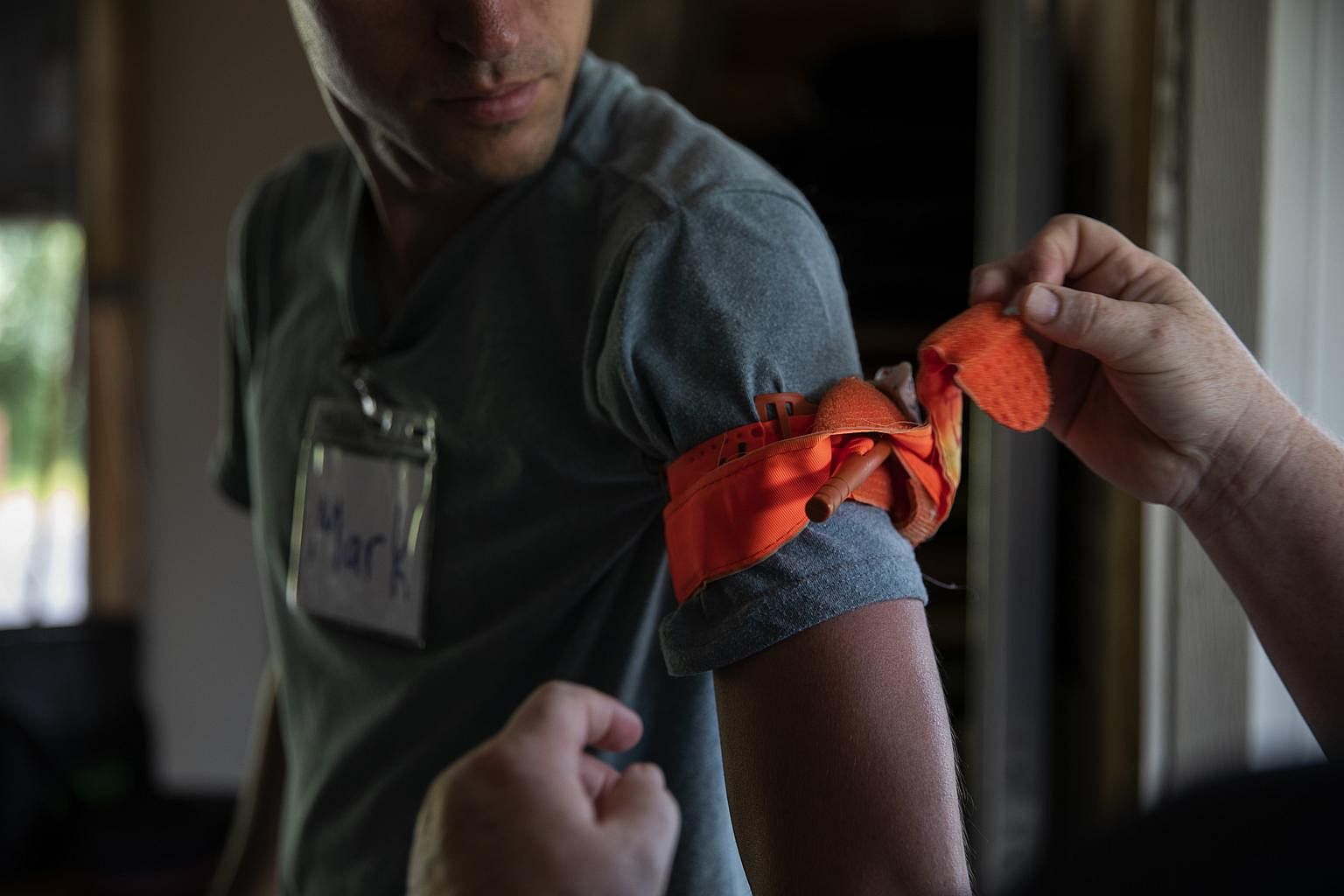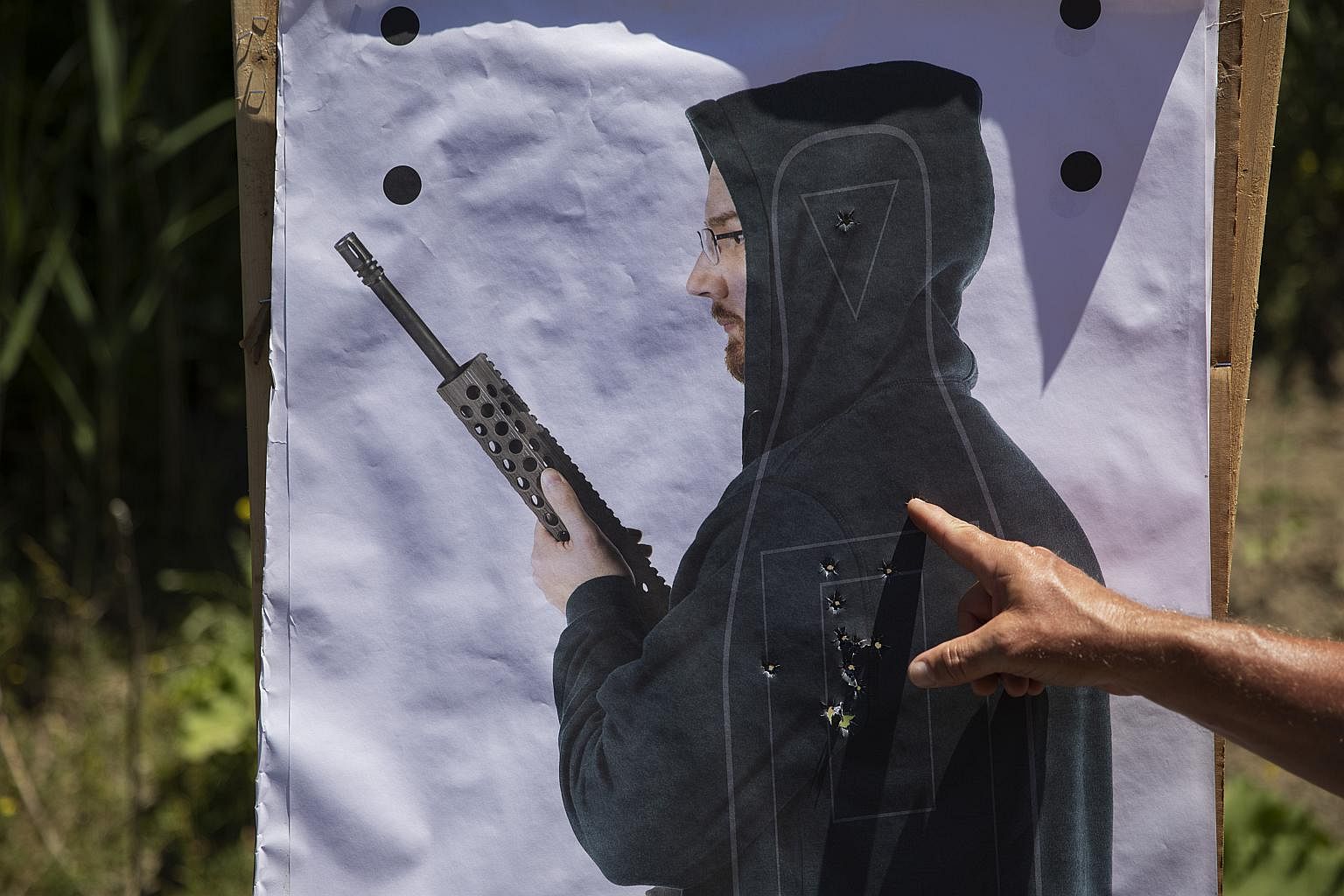RITTMAN (NYTIMES) - Mandi, a kindergarten teacher in Ohio, had already done what she could to secure her classroom against a gunman.
She positioned a bookcase by the doorway, in case she needed a barricade.
In an orange bucket, she kept district-issued emergency supplies: wasp spray, to aim at an attacker, and a tube sock, to hold a heavy object and hurl at an assailant.
But after 19 children and two teachers were killed in Uvalde, Texas, she felt a growing desperation. Her school is in an older building, with no automatic locks on classroom doors and no police officer on campus.
"We just feel helpless," she said. "It's not enough." She decided she needed something far more powerful: a 9 mm pistol.
So she signed up for training that would allow her to carry a gun in school.
Like others in this article, she asked to be identified by her first name because of school district rules that restrict information about employees carrying firearms.
A decade ago, it was extremely rare for everyday school employees to carry guns. Today, after a seemingly endless series of mass shootings, the strategy has become a leading solution promoted by Republicans and gun rights advocates, who say that allowing teachers, principals and superintendents to be armed gives schools a fighting chance in case of attack.
At least 29 states allow individuals other than police or security officials to carry guns on school grounds, according to the National Conference of State Legislatures.
As of 2018, the last year for which statistics were available, federal survey data estimated that 2.6 per cent of public schools had armed faculty.
The count has probably grown.
In Florida, more than 1,300 school staff members serve as armed guardians in 45 school districts, out of 74 in the state, according to state officials.
The programme was created after a gunman killed 17 people at Marjory Stoneman Douglas High School in Parkland in 2018.
In Texas, at least 402 school districts - about one-third in the state - participate in a programme that allows designated people, including school staff members, to be armed, according to the Texas Association of School Boards.
Another programme, which requires more training, is used by a smaller number of districts. Participation in both is up since 2018.
And in the weeks after the Uvalde shooting, lawmakers in Ohio made it easier for teachers and other school employees to carry guns.

The strategy is fiercely opposed by Democrats, police groups, teachers unions and gun control advocates, who say that concealed-carry programmes in schools - far from solving the problem - will only create more risk. Past polling has shown that the vast majority of teachers do not want to be armed.
The law in Ohio has been especially contentious because it requires no more than 24 hours of training, along with eight hours of recertification annually.
Studies on school employees carrying guns have been limited, and research so far has found little evidence that it is effective. There is also little evidence that school resource officers are broadly effective at preventing school shootings, which are statistically rare.
Yet arming school employees is finding appeal - slight majorities among parents and adults in recent polls.
Of the five deadliest school shootings on record, four - in Newtown, Connecticut; Uvalde; Parkland; and Santa Fe, Texas - have happened in the past 10 years.
It was this possibility that brought Mandi and seven other educators to a gun range tucked amid the hayfields and farm roads of Rittman, in northeast Ohio.

Over the course of three days, Mandi practiced shooting, tying a tourniquet and responding to fast-paced active-shooter drills.
Her presence on the range, firing her pistol under the blazing sun, cut a contrast to the classroom, where she dances to counting songs with 5-year-olds, dollops out shaving cream for sensory activities, and wallpapers her classroom with student artwork.
Mandi, in her 40s, arrived at the training with nervous anticipation.
She had been a teacher for a dozen years and has children of her own.
She wanted to be sure she could carry her gun safely around students. "I get hugs all day long," she said.

And then there was the prospect of confronting an actual gunman. Could three days of training prepare her for the unthinkable?
Mandi and the other educators had come from Ohio and as far as Oklahoma for a 26-hour course by FASTER Saves Lives, a leading gun-training program for school employees. It is run by the Buckeye Firearms Foundation, a Second Amendment organization that works alongside a major gun lobbying group in Ohio. The lobbying group, the Buckeye Firearms Association, supported the new state law for school employees.
Over the past decade, the foundation estimates it has spent more than US$1 million training at least 2,600 educators.

